- Home
- Jane Austen
Oxford World’s Classics Page 2
Oxford World’s Classics Read online
Page 2
‘—but you know we must marry.—I could do very well single for my own part—A little Company, & a pleasant Ball now & then, would be enough for me, if one could be young for ever, but my Father cannot provide for us, & it is very bad to grow old & be poor & laughed at.’14
But look deeper still, and these probable romances are littered with characters from a far more sensational kind of fiction. Some are wayward figures, sacrificial victims to the heroine’s happy ending: adulterous Maria Bertram, banished to the country with shrewish Aunt Norris at the close of Mansfield Park; giddy Lydia Bennet, hastily married to rascally Wickham and packed off to Newcastle. Others, like Colonel Brandon’s first love, the seduced and abandoned Eliza and her daughter (another seduced Eliza) in Sense and Sensibility, and the mysterious Mrs Smith, Anne Elliot’s invalided friend in Persuasion, emerge like ghosts from the machine of the naturalistic novel, their improbable stories used to extricate the heroine from the clutches of a melodramatic plot. The adult Jane Austen called such contrivances ‘thorough novel slang’,15 but she was not beyond learning from and using them. As a young reader, she relished novel slang; it sparked her imagination. In the teenage writings novel slang marks the place where reading and writing, consumption and creation, fuse.
Discovering the teenage fiction, as perhaps all readers do, only after the adult novels, is a revelation. They turn everything we think we know about Austen inside out and upside down. Virginia Woolf, one of her best critics, described the experience as seeing Jane Austen ‘practising’.16 Devices operating by stealth in the adult fiction run riot openly and exuberantly across the teenage page, where the very codes and standards of humane society are under attack. The mini-novels that make up the bulk of Volume the First take a swipe at fashionable novels of sensibility, moral tales designed to move the reader to pity, and even tears, at the world’s callousness and the melancholy fates of its victims. For compassion and fellow feeling these stories substitute anarchy and self-gratification, and in their abrupt and broken forms they mirror the hectic behaviour of their subjects: female drunkenness, brawling, sexual misdemeanour, theft, and even murder prevail in the nonsense villages of Crankhumdunberry and Pammydiddle. In defiance of social hierarchy, these disordered societies relish the joke by which a gentleman might marry his cook or the landlady of the local pub. Strapped for cash, as heroines at least since the days of Defoe’s Moll Flanders have tended to be, Eliza, of ‘Henry & Eliza’, supplies her needs with a banknote for £50, stolen from her ‘inhuman Benefactors’; emboldened, she follows this up by stealing the fiancé of the daughter of her next protector, the ‘Dutchess of F.’ (pp. 27–9). Eliza is a survivor who acts on instinct and on impulse, but so too do all around her: the Harcourts, her benefactors, alternately smile upon or ‘cudgel’ their workers; the Dutchess imprisons her; her children eat two of her fingers (pp. 27, 30). In ‘Jack & Alice’ and ‘The beautifull Cassandra’, lawlessness and indiscriminate violence extend to such familiar Austen locations as Bath and London’s Bond Street.
This first notebook also suggests a writer training herself in the parts and rules of fiction, playing with its various elements—story, character, plot, motive—and testing how sparely and cryptically a piece of fiction might be assembled and retain the elements necessary for comprehension. Who is Jack of ‘Jack & Alice’? Must a named figure (even a hero) appear in his own story? The brief, inconsequential chapters that make up ‘The beautifull Cassandra’ expose the random plot trajectory in contemporary novels of adventure. In ‘Amelia Webster’, the first of Austen’s mini-novels-in-letters, the reader discovers an unsuspected briskness that challenges the prolix master of the form, Samuel Richardson. His sentimental letter-writers took volumes to speak their minds. Amelia, on the contrary, finds her paper (and so her thoughts) is used up after only a sentence:
Dear Maud
Beleive me I’m happy to hear of your Brother’s arrival. I have a thousand things to tell you, but my paper will only permit me to add that I am yr affec.t Freind
Amelia Webster (p. 41)
Where knockabout humour dominates the first notebook, Volume the Second offers more extended studies of female character and motive. The target is manuals of instruction, or conduct books, as they were called, standard schoolroom fare, like Hester Mulso Chapone’s Letters on the Improvement of the Mind, Addressed to a Young Lady. A popular and lucrative category of the late eighteenth-century book market, conduct books fused a variety of genres: works of devotion, educational tracts (lessons in history, geography, and home economics), recipe books, and advice on female accomplishments. The entries in Volume the Second calculatedly distort this formula to mock the limits it imposed on female education and the behaviour expected of a daughter, wife, or mother (the only roles for which well-born teenage girls were trained). The sustained parody achieves a more unified design without sacrificing any of the comedy of Volume the First. Volume the Second has a good claim to be Jane Austen’s funniest work.
First published in 1773, two years before Jane Austen’s birth, Chapone’s Letters had been reprinted in individual editions at least sixteen times by the end of the century and was regularly bundled with other similar manuals to form small ‘Ladies’ Libraries’ of improving texts. Chapone’s book is addressed by an aunt to her niece in her ‘fifteenth year’,17 Austen’s exact age when she embarked on the first of the ‘educational’ pieces assembled in the second notebook, the sentimental novels ‘Love and Friendship’ and ‘Lesley-Castle’. Five ‘Scraps’, among them the single act of a comic play, conclude the volume and form a matching book-end to the mini-anthology of ‘Miscellanious Morsels’ or ‘Detached peices’ in Volume the First. Dedicated to her first-born niece, Fanny Austen (as those inserted at a slightly later date into the closing pages of Volume the First are to her second-born niece, Anna Austen), these ‘Scraps’ satirize the restrictive educational diet proposed for young ladies and the role of moral guide laid down for aunts, as the comparison of Chapone’s opening address to her niece with that of Aunt Jane to Fanny shows:
My dearest niece,
Though you are so happy as to have parents, who are both capable and desirous of giving you all proper instruction, yet I, who love you so tenderly, cannot help fondly wishing to contribute something, if possible, to your improvement and welfare:– And, as I am so far separated from you, that it is only by pen and ink I can offer you my sentiments, I will hope that your attention may be engaged, by seeing on paper, from the hand of one of your warmest friends, Truths of the highest importance, which, though you may not find new, can never be too deeply engraven on your mind.18
My dear Neice
As I am prevented by the great distance between Rowling & Steventon from superintending Your Education Myself, the care of which will probably on that account devolve on your Father & Mother, I think it is my particular Duty to prevent your feeling as much as possible the want of my personal instructions, by addressing to You on paper my Opinions & Admonitions on the conduct of Young Women, which you will find expressed in the following pages.—(p. 151)
By announcing herself an authority ‘on the conduct of Young Women’, Austen turns the tables on the adult world, setting up the teenager as instructor. As a whole and in its parts, Volume the Second is best appreciated as a perverse conduct manual, a girls’ guide to behaving badly. As for the addressee of the ‘Scraps’, Fanny (like baby Anna in Volume the First) was only weeks old when the dedication was penned. The message is clear: if teenage aunts might turn instructors, then it is never too early for little girls to begin to disregard the rules.
The composite character of the ideal young lady of the conduct book is ruthlessly dismantled in sentimental egomaniacs Laura and Sophia of ‘Love and Friendship’; in food-obsessed Charlotte Lutterell and the spiteful socialite Susan Lesley of ‘Lesley-Castle’; in the boldly revisionist ‘partial, prejudiced, & ignorant Historian’ of the spoof ‘History of England’; and in the ‘Collection’ of five letters that paro
dies the dilemmas facing a young woman as she enters adult society. Where the conventional conduct book proposes the letter form as a vehicle for moral instruction, in the hands of the satirical author the novel-in-letters becomes the virtuoso performance of a series of exhibitionist egos, who, possessing no social filters, quickly disclose their true natures and squander any credibility. ‘I hate Scandal and detest Children’, Lady Susan Lesley confides to Charlotte Lutterell (p. 107), while Laura’s absurd response to the sight of an overturned carriage suggests a grossly mangled exercise in juvenile philosophy: ‘ “What an ample subject for reflection on the uncertain Enjoyments of this World, would not that Phaeton & the Life of Cardinal Wolsey afford a thinking Mind!” said I to Sophia as we were hastening to the field of Action’ (p. 87). Without discretion, modesty, or self-regulation, Laura, Sophia, Charlotte, and Susan are the very reverse of a feminine ideal. It is as if the young Jane Austen has strategically animated and empowered a whole regiment of teenage girls in open contention, in their anti-social and undisciplined behaviour, with the educational models of the classroom and the drawing room. Having read the pieces in Volume the Second, Woolf’s conclusion was that ‘at seventeen she had few illusions about other people and none about herself’.19
Although there is no simple and straightforward chronology for the entries in the three notebooks, a general sense of development emerges from one to the next.20 Inscribed on the inside front cover of the third and last are the words ‘Effusions of Fancy By a very Young Lady Consisting of Tales In a Style entirely new’.21 The contents page is dated May 6th 1792 and it lists only two stories: ‘Evelyn’ and ‘Kitty, or the Bower’, which is separately dated, in its dedication to Cassandra, to August 1792, when Austen was 16. Neither story is finished in her hand. ‘Evelyn’ is an absurd and oddly surreal tale, a study of bizarre generosity and innocent greed whose angular morality and humour quickly break down. In its abstraction, it reads like an attempt to pare back the sentimental narrative to see how its elements fit together: do characters need motive or psychology? How does plot relate to character? These are issues grappled with in Volume the First. By contrast, ‘Kitty’, filling ninety-four pages in Austen’s hand, is her most sustained piece of writing to date. In its realistic presentation of domestic life through the eyes of a teenage girl (both its writer and its protagonist, Kitty) it foreshadows themes that will emerge in the adult fiction. ‘Kitty, or the Bower’, beyond any other of the teenage writings, is recognizably a novel by Jane Austen. It is also openly, and unusually, a political story.
‘Kitty’ is addressed to Cassandra in a dedication that links the work to two others ‘Encouraged by your warm patronage’: ‘The beautifull Cassandra’, a tale of arbitrary female assertiveness, and ‘The History of England’, a sweeping and absurd survey of tyranny and incompetence in the guise of brief biographies of kings and queens. Now Cassandra’s support is solicited for a more nuanced study of sexual politics. ‘Kitty’ is political in its harsh criticism of the economic constraints on female opportunity and the social injustice by which ‘a Girl of Genius & Feeling’ can be married off to a man she scarcely knows, ‘who may be a Tyrant, or a Fool or both’, simply because she is poor (p. 178). Kitty Peterson, who voices the novel’s critique, is an apt heroine for the 1790s, a period when the exposure of social inequalities was linked to constitutional reform and arguments for an extension of political rights, and when male and female writers were exploring the novel as a vehicle for comment and change.22 Kitty values education over mere accomplishments, but she is also keenly alert to the fact that, as the daughter of a merchant, her social standing is below that of her well-connected friend, the empty-headed Camilla Stanley. Camilla’s brother Edward, an unexpected visitor ‘returned from France’, brings into their confined female world the hint of danger, which is acted out when he dances and flirts with Kitty. Edward’s breaches of social etiquette may not be apparent to the modern reader, but they are severe—sharing a carriage, unchaperoned, with Kitty, and leading her, in defiance of rank, to the head of the line of dancers. As in his connection to France, a country torn apart in 1792 by revolution, his disregard for the rules of polite society injects a further political dimension into the tale’s domestic events. This is emphasized through relations between Kitty’s aunt, who is her guardian, and Edward and Camilla’s father, Mr Stanley, a Member of Parliament in William Pitt’s government. Both are political creatures; national politics is the lens through which they see the world. Convinced that an English revolution is imminent, Kitty’s aunt is, in her febrile state, ‘tremblingly alive to every alarm’. She obsessively patrols her niece’s behaviour, interpreting any relaxation of her own rigid social code as a sign of utter moral collapse, summed up in her refrain that ‘every thing is going to sixes & sevens and all order will soon be at an end throughout the Kingdom’ (p. 199).
Kitty is a typical Austen heroine, caught up in a battle of wills with her elders. Like Elizabeth Bennet after her, she is both impressionable and critical, weighing traits, even in those to whom she is attracted, with every appearance of detachment, and persuading herself (if no one else) of her keen penetration and wisdom, as in this passage of reflection on Edward Stanley’s character:
The more she had seen of him, the more inclined was she to like him, & the more desirous that he should like her. She was convinced of his being naturally very clever and very well disposed, and that his thoughtlessness & negligence, which tho’ they appeared to her as very becoming in him, she was aware would by many people be considered as defects in his Character, merely proceeded from a vivacity always pleasing in Young Men, & were far from testifying a weak or vacant Understanding. Having settled this point within herself, and being perfectly convinced by her own arguments of it’s truth, she went to bed in high spirits, determined to study his Character, and watch his Behaviour still more the next day. (pp. 201–2)
Although the story remains tantalizingly unfinished, the reader’s interest in Kitty is secure—beyond her love life and any future relationship with Edward Stanley. We care about Kitty in and for herself; we care about her capacity to distinguish true from false friends and to learn from her mistakes; and we hope that she might learn these lessons without losing either her openness to experience or her keen sense of justice. ‘Kitty, or the Bower’ sets the stage for Jane Austen the professional novelist, but she will never again write with such candour about social and sexual politics.
* * *
Volume the Third marks a close to the teenage writings, as far as we know them. But habits established in the three notebooks continued in two particular ways. For the rest of her life, Jane Austen would maintain the practice of amateur composition to amuse family and friends alongside her writing for the printing press. Home-centred pieces, such as her occasional verses and the comic ‘Plan of a Novel, according to hints from various quarters’, probably written in early 1816 soon after the publication of Emma, grow out of and thrive upon the opinions and reception of a circle of family and friends reading, laughing over, and commenting upon the author’s performance.23 There is also evidence, provided by the substantial continuations to both stories in Volume the Third, that this notebook became, in time, a different kind of shared space—a space for family writing as well as reading. Critics have long recognized that these continuations, inserted more than twenty years after the initial composition of the stories, are in the hands of Anna Lefroy and her younger half-brother, James Edward Austen, the children of Jane’s eldest brother James.
Anna and James Edward grew up close to Aunt Jane, moving into her old home of Steventon parsonage after their father took over clerical duties there when his own father, George Austen, retired with his wife and daughters to Bath in 1801. Even earlier, Anna (who, christened Jane Anna Elizabeth Austen, was her aunt’s namesake) had been brought, as a 2-year-old, to live at Steventon with Jane and Cassandra after the death of her mother. Earlier still, she became the unwitting 6-week-old dedicatee of the ‘Detac
hed peices’ towards the close of Volume the First. There is ample evidence that Anna was Aunt Jane’s willing pupil throughout her childhood and teenage years, and that habits of shared composition began early between them. Anna’s unfinished continuation to ‘Evelyn’ is written on four leaves of varying sizes, loosely inserted at the end of Volume the Third and signed with the initials ‘JAEL’ (Jane Anna Elizabeth Lefroy), indicating that it does not pre-date November 1814, when, aged 21, she married Ben Lefroy.24 Long after Austen’s death, Anna would attempt a continuation of her aunt’s final manuscript, Sanditon.25
Like his sister, the teenage James Edward tried his hand at short stories and novels, portions of which survive, sending them, on occasion, for comment and approval to Aunt Jane.26 His conclusion to ‘Evelyn’ is written directly into Volume the Third, taking up the story where Austen broke it off; he also attempted a continuation to ‘Kitty, or the Bower’ within the notebook. Significantly, too, he undertook to make some bold revisions to ‘Kitty’ as originally written by his aunt. These have only recently been attributed to him, and the recognition of his revising hand alters considerably any appreciation of the story. Many small local revisions to the notebook, including such important details as the change of title from ‘Kitty, or the Bower’ to ‘Catharine, or the Bower’, and the renaming of Kitty Peterson as Catharine Percival, assumed by previous editors to be Austen’s own, were introduced by James Edward. These alterations, all tending to gentrify or upgrade the tone of the story, diminish its political thrust as it was originally written in 1792, a time when championship of wider civil rights and educational opportunities was linked to a reappraisal of vernacular English. The cultural and political resonances of the straightforwardly English name Kitty Peterson, for example, accord with the story’s realism; the restyled Catharine Percival appears, by contrast, a figure cloaked in the chivalric flattery of romance.27 The text presented here offers the reader the first opportunity, other than that granted to Jane Austen’s immediate family, to read her story as she wrote it—and before the next generation set about its revision and amelioration.28

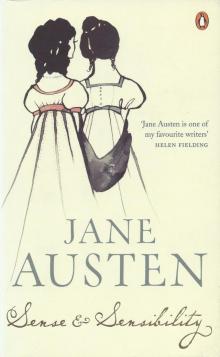 Sense and Sensibility
Sense and Sensibility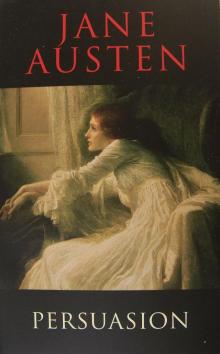 Persuasion
Persuasion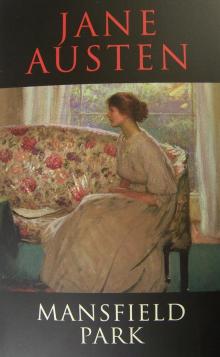 Mansfield Park
Mansfield Park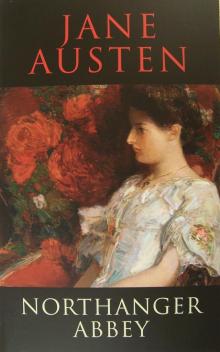 Northanger Abbey
Northanger Abbey Pride and Prejudice and Zombies
Pride and Prejudice and Zombies Pride and Prejudice
Pride and Prejudice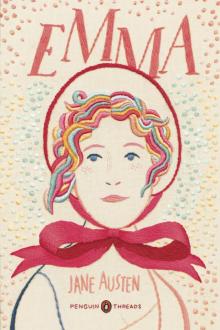 Emma
Emma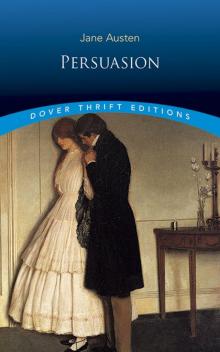 Persuasion (Dover Thrift Editions)
Persuasion (Dover Thrift Editions)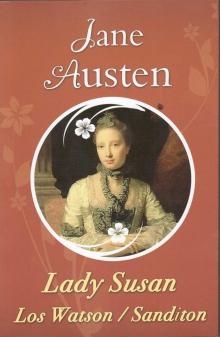 Lady Susan
Lady Susan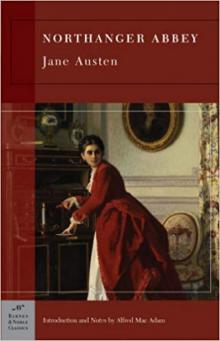 Northanger Abbey (Barnes & Noble Classics)
Northanger Abbey (Barnes & Noble Classics)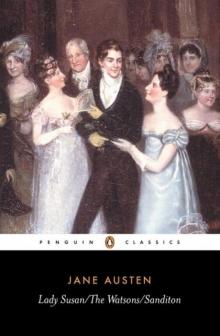 Lady Susan, the Watsons, Sanditon
Lady Susan, the Watsons, Sanditon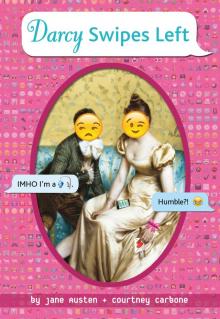 Darcy Swipes Left
Darcy Swipes Left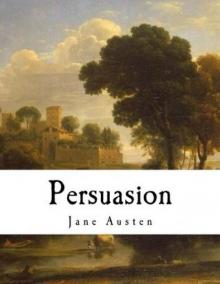 Persuasion: Jane Austen (The Complete Works)
Persuasion: Jane Austen (The Complete Works)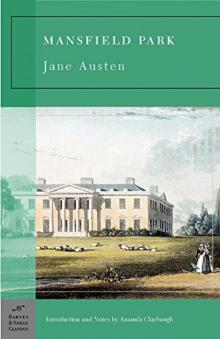 Mansfield Park (Barnes & Noble Classics Series)
Mansfield Park (Barnes & Noble Classics Series) Sense and Sensibility (Barnes & Noble Classics Series)
Sense and Sensibility (Barnes & Noble Classics Series)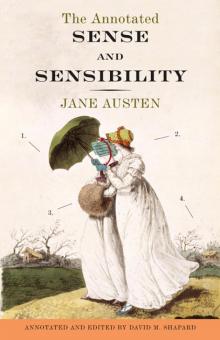 The Annotated Sense and Sensibility
The Annotated Sense and Sensibility Pride and Prejudice (Clandestine Classics)
Pride and Prejudice (Clandestine Classics)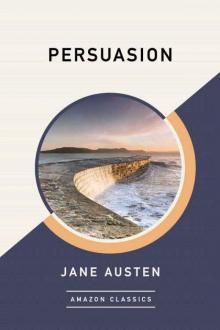 Persuasion (AmazonClassics Edition)
Persuasion (AmazonClassics Edition)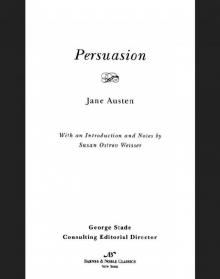 Persuasion (Barnes & Noble Classics Series)
Persuasion (Barnes & Noble Classics Series)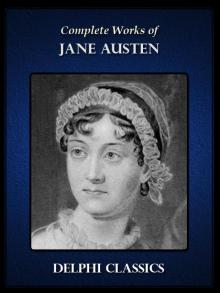 Complete Works of Jane Austen
Complete Works of Jane Austen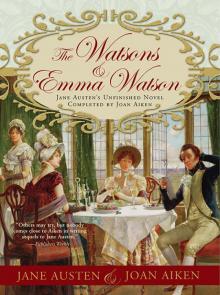 The Watsons and Emma Watson
The Watsons and Emma Watson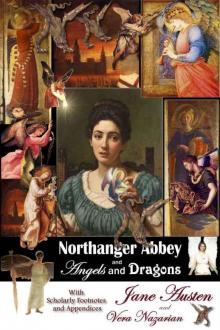 Northanger Abbey and Angels and Dragons
Northanger Abbey and Angels and Dragons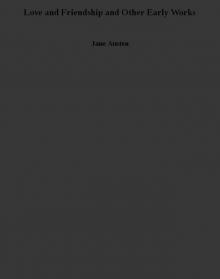 Love and Friendship and Other Early Works
Love and Friendship and Other Early Works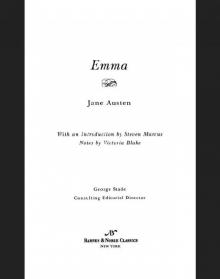 Emma (Barnes & Noble Classics Series)
Emma (Barnes & Noble Classics Series) Sanditon
Sanditon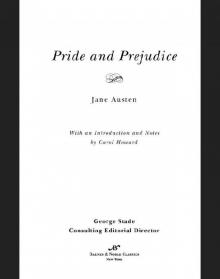 Pride and Prejudice (Barnes & Noble Classics Series)
Pride and Prejudice (Barnes & Noble Classics Series)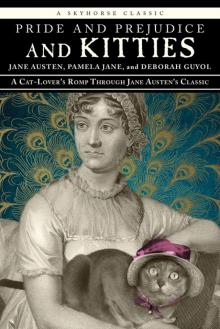 Pride and Prejudice and Kitties
Pride and Prejudice and Kitties The Annotated Northanger Abbey
The Annotated Northanger Abbey Oxford World’s Classics
Oxford World’s Classics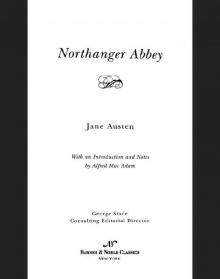 Northanger Abbey (Barnes & Noble Classics Series)
Northanger Abbey (Barnes & Noble Classics Series)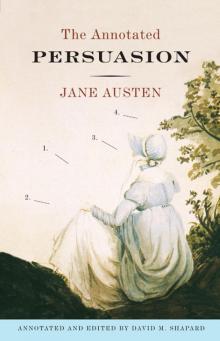 The Annotated Persuasion
The Annotated Persuasion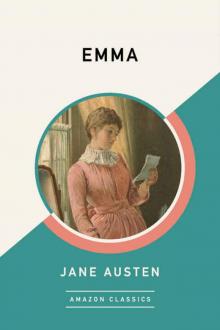 Emma (AmazonClassics Edition)
Emma (AmazonClassics Edition)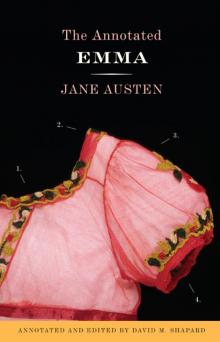 The Annotated Emma
The Annotated Emma The Annotated Mansfield Park
The Annotated Mansfield Park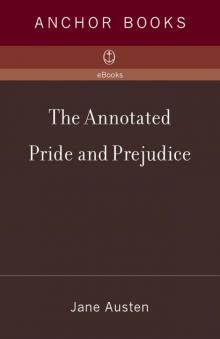 The Annotated Pride and Prejudice
The Annotated Pride and Prejudice